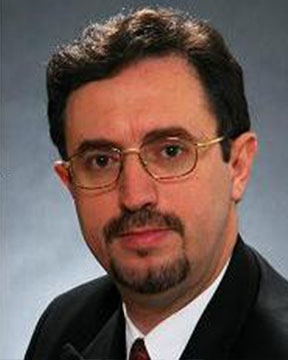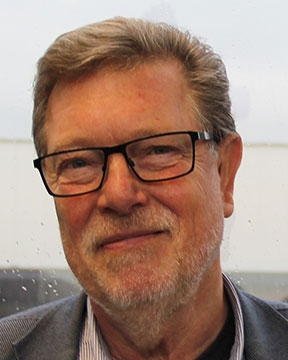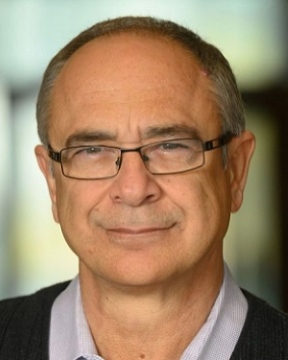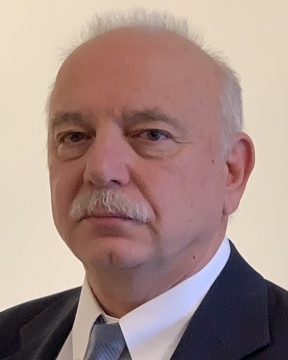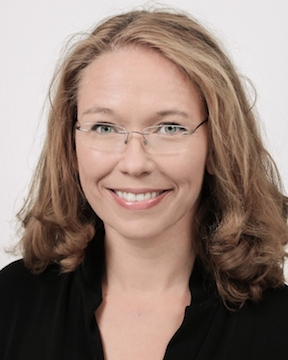
Intl. Symp. on Sustainable Molten Salt, Ionic & Glass-forming Liquids and Powdered Materials (8th Intl. Symp.)

Bio | CV | Publications
This major symposium is in honor of the distinguished work and lifetime achievements of Prof. Georges J. Kipouros. Professor Kipouros is a well-known figure for his profound impact on the production of materials in molten salts, at laboratory and industrial level, extensive research on thermodynamics, electrochemistry, electroless plating, spectroscopy, vapour pressure measurements on sensitive materials, phase diagrams determinations, electrometallurgical operations, corrosion of copper and nickel, production of light metals, reactive metals, refractory metals, calcium carbide, cermets, rare earth elements, magnets, powder metallurgy, additive manufacturing and tissue engineering. He has dedicated himself to research and education in The University of Toronto, Massachusetts Institute of Technology, General Motors Research and Development, Technical University of Nova Scotia, Dalhousie University, University of Saskatchewan, Waterloo University, The University of Tokyo, Tohoku University, Kyoto University, University of Patra’s, Trondheim Institute of Technology. Over 200 publications and many more confidential reports have been written on the subjects of the research.
There are many excellent researchers who studied in his laboratory or under his guidance in Canada, USA, Japan and Europe. Throughout his career, his activity has impacted various fields, such as:
1. Molten salts Theory and Practice University of Toronto (zirconium and hafnium systems)
Characterisation of systems
Due to hygroscopic nature of the salts all experiments are contacted in a well protecting devices such as glove box or dry box filled with inert gases preferably argon or nitrogen, Devices used to perform measurements are designed or modified to operate under inert atmospheres. The systems were selected on the basis of their use or potential use to produce metals or materials. The aim was the electrolytic recovery of zirconium and hafnium metals and the separation of the two elements in alkali molten salt systems. To secure the purity of the components new devices were invented such as the bubbling of the refractory metal chloride through molten tin. Phase diagrams, vapour pressures measurements and x-ray determinations were measured in specially designed quartz fixtures. The result was the succesful electrorefing of zirconium metal in chloride-fluoride melts and the most acurate vapour pressure measurments of hexachlorocompouns of zirconium and hafnium important for their separation that confirmed the phase diagram determination based on the Gibbs phase rule. X-ray fluerence was used to determine the effectiveness of the separation of zirconium fromm hafnium. The vapour pressure measuremnts resemblea tree and were named “Flengas tree” in order of the mentor of the molten salts.
2. Electrolytic and in-situ Raman spectroscopic studies of molten salts Massachusetts Institute of Techmology (aluminum, magnesium and molybdenum syatems)
The period of investigation at MIT lasted three years and the laboratory which I established in Cambridge, Massachusetts was equipped with state of the art dry box, laser Raman Spectrometer for in- situ investigation of real electrolysis systems. A home made furnase cell was constucted from quartz which was treated by oxygen flame cone to make the quartz most stable in the presence of fluoride melts and allowed the lazer beam to go through the melt and will allow for observations at a safe direction while the electrolysis was been conducted, The industrial chloride electrolysis cell for magnesium production was invetigated successfully and the streamers were observed during the electrolysis. The chloride aluminum production cell was also investigated and spectacular new results were observed, As the experience was groing the investigation turned to the actual fluoride electrolysis aluminum process.The results were published at that time.
In addition to the in-situ Raman spectroscopy the research at MITincluded the attempt to produce a thick oating of molybdenum on a graphite rod which will allow to extend the life of graphite to high tempetature without destruction. Since the system was investigated for the first time the phase diagram of KCl-K3MoCl6 was investigated and the electrochemical system was was investigate. Additions were made to improve the electrochemical behaviour and the spectacular result of Mo coating cm size was achieved.
3. Development of a process to produce neodymium-iron alloy to be used in the production of Nd2Fe14B permanent magnets discovered at General Motors Research Laboratories, Warren, Michigan, USA.
The industry research career followed that of MIT since after the discovery of the neodymiun iron boron magnets GM needed to develop a molten salt process offering a position of Senior Research Scientist, Department of Physical Chemistry, General Motors Research and Development Center, Warren, Michigan, USA (1985-1989). The urgency and importance of the research to produce the neodymium-iron alloy had resulted in assembling the best equipment available in dry boxes and characterization of the reactants and products in the Department of Analytical Chemistry. The process chosen is that of reduction of neodymium oxide by calcium metal dissolved in calcium chloride. In addition to actual experiments for the establishment of the process research initiated on the rare earths and specific needs to regenerate the salts so that the process can be continuous. As the research was progressing in the laboratories research begun for the scale-up and the transfer of the process to industry. A need to design and conduct scale-up experiments to determine the parameters necessary for technology transfer, developed methods for regenerating and recycling the reactants and treating the by products. The process tranferred successfully to the plant of MAGNEQUENCH SBU in Anderson, Indiana. Later the plant was tranferred to China which was the major supplier of the rare earth elements. The extrction group asohelped in the quenching of themagnetic material and also in the powder sintering of the final products.
4. New directions in electrochemical metallurgy and powder metallurgy in an academic career. Technical University of Nova Scotia (TUNS/Dalhousie).
The return to Canada lead to new approach to research given the luck of the necessay infrastucture to continue the previous researh. The focus was shifted to other important areas in the production metals and alloys, molten salts and slags by measuring viscocities relevant to steelmaking, corrosion of alloys, and the first in Canada research on powder metallurgy of light metals, and alternatives to electrolytic processes such as electroless coatings of metals and alloys. In the field of powder metallurgy the process was extended to aluminum, magnesium and titanium metals by alloying additions to help with the sintering by removing passivation layers. Three more research directions were investigated: the passivation of copper cathodes in the production of pure copper; the aqueous corrosion of cermets and the electroless coating of of difficult to plate metals. In the passivation of the copper cathodes it was discovered that the passivation was caused by the presence of nickel in the electrolyte. Industry responded favorably to the discovery and every copper production plant contains a nickel removal unit. The electroless plating was initiated for the prodection of sintered aluminum surfaces by depositing nickel boride hard surface coatinng.
5. Return to industry and molten salts research for the reduction of weight in transportation. Department of Physics, General Motors Research and Development Center.
During the academic research involvment and the consulting to small and large international corporations that was provided in the fields of his research interests it became evident that the reduction of the weight of transportation vehicles would be the need . Responding to an invitation (1995-1996) the first sabbatical leave of absence was spent as a Faculty Consultant, Corporate Magnesium Center, to lead in the development of a new process to produce high purity mangesium for automobile manufacturing. This research was a combination of the previous work in General Motors and the work in academia.This relation continued for many more years as it also involved directed efforts to tranfer the process to the industrial plant by partnership with an aluminum producer and also evaluation of alternative processes for the production of magnesium chloride.
6. Cermets
Titanium carbide (TiC)-based ceramic-metal composites, or cermets, have become more widely used in demanding wear applications due to their improved capabilities when compared with more traditional “hardmetals” based on tungsten carbide with a cobalt binder (WC-Co) [1]. TiC-based cermets have several properties that typically exceed those of WC, such as increased hardness and toughness, as well as a lower mass; the density of WC is approximately three times that of TiC. Therefore, these characteristics offer the potential for TiC-based cermets to replace WC-Co in a variety of industrial applications. For example, it has been shown that TiC-based cermets can exhibit sliding wear resistance comparable to or even exceeding that of WC-Co. Extensive work had been performed in the laboratory at Dalhousie University and is still continues with collaborations of Professors Kevin Plucknett and Zoheir Farhat. The laboratory grew from a little corner of a small room to a substantially well-equipped modern laboratory that not only allows for the preparation of cermets but also the corrosion performance of the various types produced in the laboratory.
7. Electroless/Electrolytic plating
There are some metals termed difficult to plate and also some other materials which are called difficult to plate on. There processes that could be used and they had been developed many years ago but they have been overlooked for many reasons one of which is the difficulty to operate. A chemist with a great patience agreed to revive when the question of how th strenthen the surface hardness of aluminum parts produced by powder metallurgy.
The chemist is Dr. Nazila Dadvand, recently working as Director, Coatings division at Texas Instruments. In the process of electroless nickel plating, the chemical reduction of nickel ions occurs in an autocatalytic way without the application of external electric current. The desirable properties of coating can be generated at both simple and complex shape parts through the effective control of solution by means of electroless nickel plating. Electroless Ni-P coating offer distinct advantages, such as good corrosion resistance and wear resistance, low friction coefficient, high hardness, solder ability and uniform thickness, which is most frequently used to plate steel. Electroless Ni-P bath generally contains nickel salt for a source of nickel, reducing agent to supply electrons for the reduction of nickel, complexing agents to control the free nickel available to the reaction, buffing agents to resist the pH changes caused by hydrogen released during deposition. Heat yielded by increasing and controlling the temperature of bath provides the driving force and energy for the deposition process. The performance of electroless Ni-P coating is associated with the type and concentration of bath constituents, as well as temperature and deposition time. Different parameters influence the structure and composition of coating, then further affects the corrosion resistance and wear resistance. The process was successful for aluminum and extended to the electroless Ni-P coating on carbon steel using the ammonia-free friendly bath. The success of the process was used in a smart application of the application of Ni-P on steel axcels which allows to monitor the thickness of phsphorizing Ni-P during the operation and when the coating disappeared re-coating performed and this saves the axcels for wear. Many students worked on the invesrtigation of different complex coatings on difficult to plate surfaces.
8. Powder metallurgy and additive manufacturing
Aluminum and its alloys are known for their attractive properties. When combined with powder metallurgy (PM) as a manufacturing technique, the resultant aluminum PM alloys have gained appreciable commercial attention and have found many interesting applications principally within the automotive industry. Parts produced by PM technology have a net or near neat shape in addition to properties that not attainable through traditional metal processing. In conventional PM technology, the raw powder material is compacted, sintered and sometimes post- treated to obtain a coherent product. Sintering by far is the most important step in this sequence. Basically, most aluminum sintering occurs in the presence of a liquid phase so called liquid phase sintering (LPS). In LPS, the mass transport rate is much faster than in solid state sintering and due to cost and productivity advantages, the greatest level of industrial sintering is performed using the LPS technique. In certain instances a high densification rate is realized enabling near full density to reach in times as short as 15 minutes. When designing aluminum PM alloys, careful attention must be paid to the choice and concentration of alloying elements as these can not only influence the mechanical properties of the sintered product, but also have an acute impact on sintering behaviour. Many elements have been studied in this sense including copper, zinc and magnesium to name but a few. These elements are known for their ability to form a liquid phase and can thereby improve the sintering behaviour of aluminum. Furthermore, magnesium can also disrupt the aluminum oxide layer through the formation of the spinel phase (MgAl2O4), another factor of critical importance when sintering aluminum powders.
Similar considerations apply to magnesium, the lightest practical metal, which studied in the laboratory to establish its feasibility and titanium which is the new comer to the powder metallurgy process. Recently the artificial intelligence, AI, which initially applied in the prototyping helped tremendously in the expansion of the powder metallurgy to the extent that AI is considered the powder metallurgy or additive metallurgy. Kipouros laboratory was the first to demonstrate the aluminum powder sintering and later with the collaboration of GKN Sinter metal. Presently the work continues under the leadership of Professor Paul Bishop, former employ of GKN and former Ph.D. student of Professor Kipouros.
9. Awards and Citations
2019 Vice General Manager of R&D, the equivalent of Vice-President of Research and Development of a western industry, Zhejiang Kangpurui Auto Parts Co., Ltd., as a result of a 10-year Visa R of the Peoples Republic of China as a recognition of High Level Foreign Talents. Duties to begin when the Covit-19 allows.
2017 Editor's Choice Article. Metallography, Microstructure, and Analysis
2016 Canadian Academy of Engineering Fellowship Award, FCAE
2016 Canadian Institute of Mining, Metallurgy and Petroleum Fellowship Award, FCIM
2013 Life member, Engineers Nova Scotia
2010 CIM Distinguished Lecturer
2007 Japan Society for Promotion of Science (JSPS/NSERC Award), Invitation Fellowship, 2007, 2017
2007 20th Canadian Metal Chemistry Award, MetSoc of CIM, 2007
2004 Best CIM Paper in CMQ 2004
2004 Axel Madsen Award –Metal Powder Industry Federation
2004 Outstanding Poster Award–Metal Powder Industry Federation
1998 The Metallurgical Society of CIM Graduate Poster Competition
1995 ORTECH International Student Award, Best Paper in Materials Chemistry
1994 Best Reactive Metals Paper in Light Metals '93
Cited in: Canadian Who’s Who American Men & Women in Science
Numerous awards were also awarded to the graduate and undergraduate students during their studies in learning societies of their fields.
This symposium is organized on the occasion of Prof. Kipouros 50 year scientific anniversary. Reflecting on his outstanding academic activity, this international symposium will feature plenary, keynote and invited lectures on scientific and technological ferrous metallurgical topics, such as raw materials processing, extraction processes, light, refractory metals, rare earth processes, powder metallurgy/additive manufacturing processes and processing in molten salts, and electrolytic and electroless plating; not only conventional but also novel processes or ideas are welcome.
ROUND TABLE DISCUSSIONS
A round table discussion open to everyone interested will be organized at a specific date and time during the symposium. It will be a platform for high level representatives of various industries, technologies, and academic disciplines to freely discuss and debate all topics of this symposium, and identify positive and efficient pathways towards sustainability in industrial practices, technologies, and research.
You are cordially invited to actively participate in this symposium by submitting and presenting a paper, or by attending the round table. We look forward to meeting you in Phuket, November 2022.



